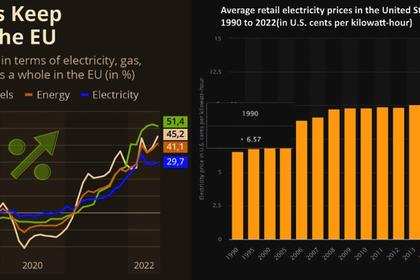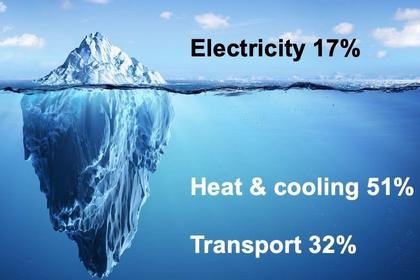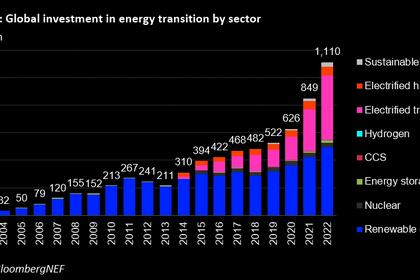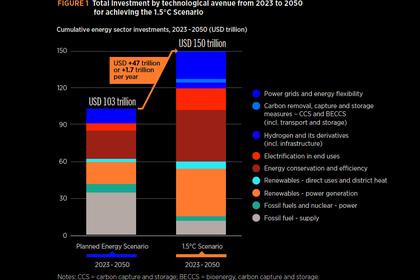
DEMAND FOR RENEWABLES UP
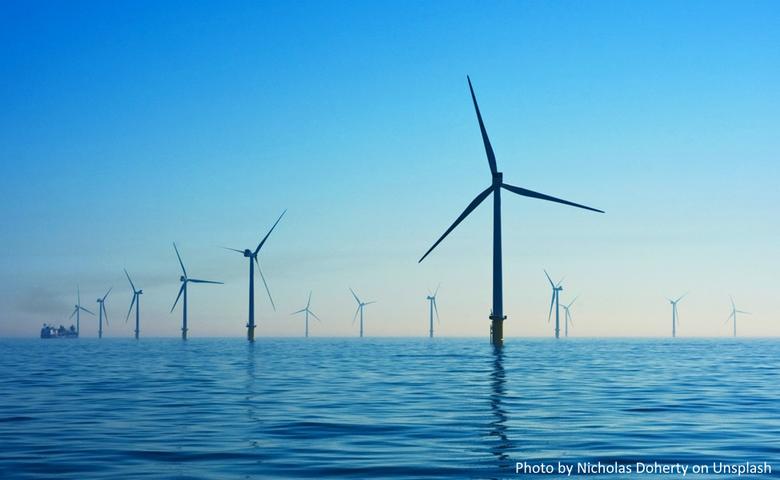
Renewable Energy Projects Are Now Accepting Enrollment
As President and CEO of Strategic Partnerships, Inc., Mary Scott Nabers has decades of experience working in the public-private sector. A well-recognized expert in the P3 and government contracting fields, she is often asked to share her industry insights with top publications and through professional speaking engagements.
Feb. 9, 2024 - Demand for renewable energy resources has never been more robust, and billions of dollars in federal funding are now available to support projects designed to meet the demand. Projects that qualify for funding are designed to harness energy from water, wind or solar sources. Some technology projects are also eligible. The deployment of renewable resources is expected to grow by 17% in 2024, the U.S. Energy Information Administration has announced. If that happens, it will represent almost one-quarter of all power generated in America.
The offshore wind market is positioned to receive even more federal investments because of a stated goal to have 30 GW of offshore wind energy by 2030 (enough to power 10 million homes). In fact, the U.S. Bureau of Ocean Energy Management will hold lease auctions this year to demonstrate ongoing interest in the offshore wind industry, whose supply chain alone may generate over $100 billion in revenue by 2030.
Two bills, namely the Infrastructure Investment and Jobs Act (IIJA) and Inflation Reduction Act (IRA), have invested approximately $42 billion in renewable energy for the year 2023. This investment is expected to increase the current funding deployments for wind and solar energy by more than two-fold. Other federal funding for renewable energy went far beyond that in 2023. The U.S. Department of Energy announced $45 million for tidal energy technology development, $118 million for sustainable biofuel production and $72 million for innovative manufacturing processes for wind and hydropower technologies. The federal government plans to be a carbon-neutral America by 2050.
Several open funding opportunities to support renewable energy projects are now available:
- The Energy Efficiency and Conservation Block Grant Program will support projects that reduce energy use, fossil fuel emissions and enhance energy efficiency by supporting the installation of renewable technologies. The opportunity for a portion of this $430 million is open until April 2024.
- Another $2 billion is available through the EPA Community Change Grant to help disadvantaged communities deploy clean energy projects and strengthen climate resistance. Applicants are invited to submit requests for this funding until November 2024.
In January 2024, the U.S. Department of Transportation (USDOT) allocated $426.7 million to support an offshore wind project in California. The project has an estimated total cost of $1 billion. USDOT will partner with state officials and the Humboldt Bay district to oversee the delivery of a high-tech marine terminal to support the structure and operation of offshore wind turbines.
The state of California has set ambitious goals that call for 5 gigawatts of power to be generated offshore by 2030. This project will deliver a deep-water port and marine terminal to facilitate the shipments and assemble the approximately 1,000-foot turbine devices. Once assembled, the turbines will be towed to federally leased water to generate power. The project also includes implementing environmental protection measures. The project is still in its planning and design stages.
The University of Kentucky plans to work through a Public-Private Partnership (P3) to enhance energy efficiency as it grows. Officials have announced plans to construct additional facilities to meet the needs of its healthcare enterprise. The expansion will significantly increase its facilities portfolio and surpass the capacity of existing power infrastructure.
Presently, the university operates a district energy system that covers its entire campus. The system comprises five interconnected heating and cooling plants supported by an extensive network of underground distribution lines. Consultants have been hired to help design the various phases of this engagement and the procurement process that will be launched.
A large, multi-phase project in Columbia, South Carolina, will be launched to repair a hydroelectric power plant in the Columbia Canal for between $90 million and $115 million. The canal includes a 10-megawatt hydroelectric power plant, spillway and headgates. It has been used to generate hydroelectric power since 1892, but severe flooding damaged the plant in 2015, and it is no longer operable.
This project has received funding through grants from the U.S. Department of Housing and Urban Development, Building Resilient Infrastructure and Communities, and a utility ratepayer program. Interested contractors have time to get more detailed and identify subcontractors before solicitations are dropped.
A $42 million district energy project in Burlington, Vermont, will be designed to harness thermal energy from a wood-fired plant. The objective will be to supply the Vermont Medical Center with a reliable source of steam and low-carbon energy to centralize several buildings' heating, cooling and power-generation needs. This system will provide energy efficiency, a reduced carbon footprint and cost savings. It will also slash greenhouse gas emissions.
Funding for the project comes from a mix of public and private sources and a $5.16 million federal grant. Construction will follow the state’s permitting process.
The city of Duluth, Minnesota, was awarded $700,000 through a federal planning grant to support the design of a geothermal heating district that will provide heat to hundreds of homes and businesses in Lincoln Park. The grant will also be used to conduct technical and economic feasibility studies as the geothermal heating system will be the first in the U.S. Once that task has been completed, city officials will submit the finalized design and request additional federal funding, which could cover up to 90% of costs. The total cost of the project is currently estimated to be at least $20.7 million, but most officials believe the cumulative cost will likely be higher.
The system will utilize excess heat produced by a nearby wastewater treatment facility and share heat energy with the surrounding neighborhoods. Treated hot water will be pumped through pipes to Lincoln Park and potentially downtown Duluth. Instead of burning fossil fuels to generate heat, the sustainable design will provide excess energy that would have otherwise been wasted. Construction solicitations may be delayed until 2026 to align with other planned utility projects.
-----
Earlier:

